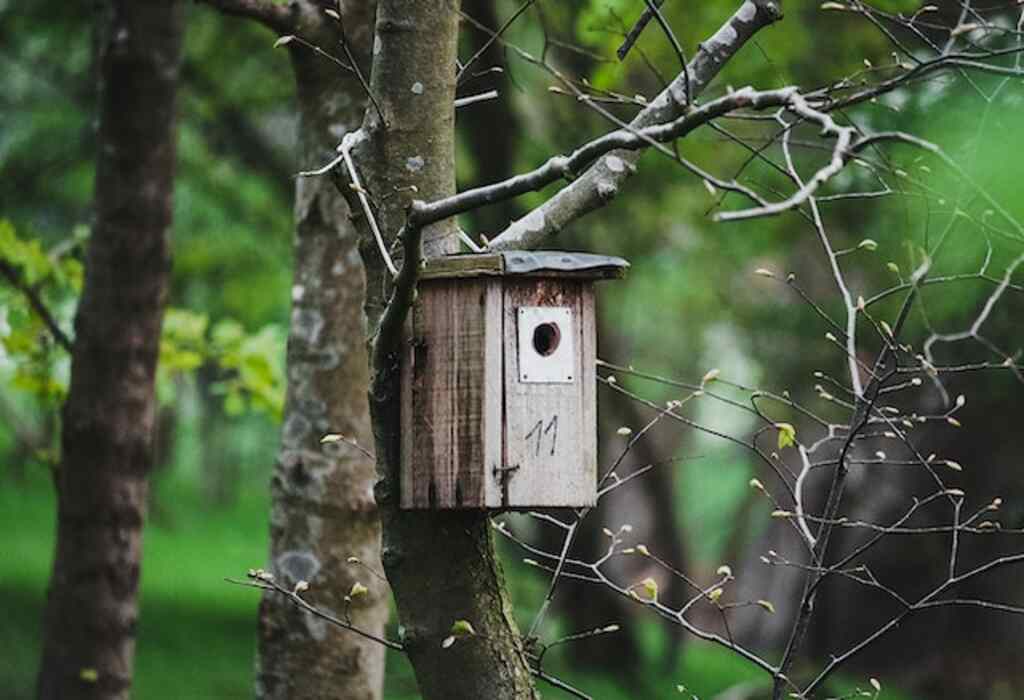Do Birds Actually Use Birdhouses? You might have spent hours meticulously crafting the perfect birdhouse, hoping to attract a flurry of feathered tenants. But do birds really appreciate your architectural prowess?
In this article, we reveal the short answer to this age-old question, along with fascinating insights into why some birds love these miniature abodes. Get ready to discover the surprising secrets of avian real estate!
Table of Contents
- 1 The Basics of Birdhouses
- 2 The Importance of Birdhouses
- 3 The Question: Do Birds Actually Use Birdhouses?
- 4 The Purpose of Birdhouses:
- 5 Types of Birds that Use Birdhouses
- 6 Factors that Affect Birdhouse Usage
- 7 Benefits of Using Birdhouses for Birds and Humans
- 8 Common Misconceptions about Birdhouses
- 9 Conclusion
- 10 FAQs: Do Birds Actually Use Birdhouses?
- 10.1 Do birds actually use birdhouses?
- 10.2 What types of birds use birdhouses?
- 10.3 How can I attract birds to use my birdhouse?
- 10.4 What should I look for in a birdhouse?
- 10.5 When should I put up birdhouses?
- 10.6 Where should I place my birdhouse?
- 10.7 How can I maintain my birdhouse?
- 10.8 Can I have multiple birdhouses in my yard?
- 10.9 What if birds don’t use my birdhouse?
- 10.10 Can I watch birds without disturbing them in the birdhouse?
- 11 Author
The Basics of Birdhouses
Birdhouses, also known as nest boxes, are man-made structures specifically designed to provide a safe and suitable nesting site for birds. These boxes come in various shapes and sizes to accommodate different bird species.
They are typically made of wood or recycled plastic and can be mounted on poles or trees. The benefits of birdhouses go beyond providing a cozy habitat for our feathered friends; they also play an essential role in conserving bird populations.
As urbanization expands, natural nesting sites such as tree cavities and old buildings become scarce. Birdhouses are an effective way to create artificial nesting habitats for cavity-nesting birds, increasing their chances of survival.
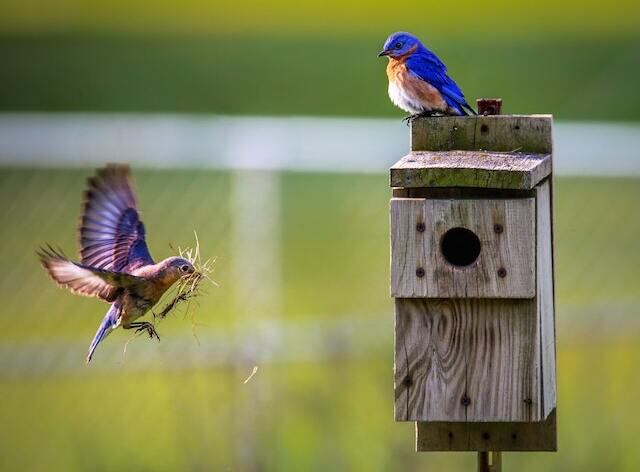
The Importance of Birdhouses
Birds play a vital role in the ecosystem by pollinating plants, dispersing seeds, and controlling pest populations.
However, many bird populations have been declining due to habitat loss and other human activities. Providing birdhouses is one way we can help conserve these important species.
Birds face numerous challenges when it comes to finding a suitable nesting site that provides shelter from harsh weather conditions and protection from predators.
Birdhouses address these challenges by providing a secure place for birds to raise their young without fear of danger.
The Question: Do Birds Actually Use Birdhouses?
While the idea of giving birds safe homes sounds great in theory, one question lingers: do they actually use them? The answer is yes!
Many species will readily accept artificial nests if they meet specific requirements such as size, location, and design.
However, it’s essential to keep in mind that not all bird species use nest boxes – some prefer natural cavities or abandoned woodpecker holes instead.
Additionally, some areas may have plenty of natural nest sites available already; therefore, the placement of additional nest boxes may not attract birds.
Birdhouses are an excellent way to help birds thrive in urban areas and provide conservation benefits.
While it’s not a 100% guarantee that birds will use artificial nests, many species will accept them if they meet their specific requirements.
In the following sections, we will discuss the purpose of birdhouses, types of birds that use them, and factors that affect their usage.

The Purpose of Birdhouses:
Protection from predators
Birds face many dangers in their environment, and predators are one of the biggest threats to their safety. Many birds build their nests in open areas where they are exposed to predators like cats, squirrels, and snakes.
Birdhouses provide a safe haven for birds by giving them a place to build their nests that is out of reach from these predators.
Birdhouses can be designed with predator guards such as slanted roofs or metal baffles that prevent animals from climbing up and accessing the entrance hole.
Additionally, birdhouses can be placed in locations that are difficult for predators to access, such as high up on poles or tree branches.
Shelter from harsh weather conditions
Birds also need protection from harsh weather conditions such as wind, rain, snow, and extreme temperatures.
This is especially important during breeding season, when eggs and young chicks are particularly vulnerable. A well-designed birdhouse provides insulation and protection against the elements.
The size of the entrance hole is also an important factor in providing shelter since it controls the amount of airflow into the nest box. In colder climates, smaller entrance holes can help retain heat inside the nest.
Nesting sites for breeding and raising young
Birdhouses provide an ideal nesting site for birds during breeding season, when they need a safe space to lay eggs and raise their young. Nesting boxes come in various shapes and sizes depending on the species of bird that will use them.
Using a birdhouse instead of building a nest in natural sites like trees or bushes can also provide benefits for both humans and birds.
For example, it allows us to observe birds closely without disturbing them or putting them at risk. It also helps reduce competition among birds for natural nesting sites, which can support healthy populations over time.
Overall, birdhouses serve multiple purposes including offering protection from predators, shelter from harsh weather conditions, and providing nesting sites for breeding and raising young.
By providing safe and suitable nesting sites for birds, we can help support healthy populations of these beautiful creatures.
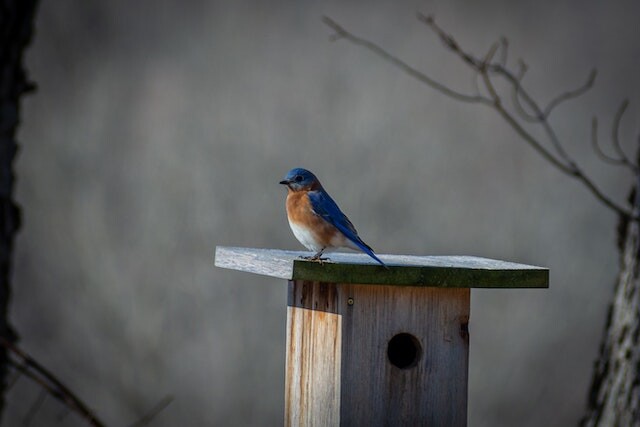
Types of Birds that Use Birdhouses
Bluebirds: The Symbol of Happiness and Hope
Bluebirds are a favorite among bird lovers, as they are known to bring joy and happiness wherever they go. These small, colorful songbirds can be found throughout North America and are characterized by their bright blue feathers, orange chests, and white bellies.
Bluebirds prefer open habitats with scattered trees or shrubs, making them common residents of suburban yards and gardens. They are cavity nesters, meaning they seek out holes in tree trunks or branches to build their nests.
However, due to habitat loss and competition with other species for natural nesting sites, many bluebird populations have declined in recent years.
Fortunately, bluebird boxes have become popular among conservationists and bird enthusiasts as a way to provide additional nesting sites for these beloved birds.
A well-built bluebird box should be mounted on a pole or post at least 4–6 feet above the ground in an open area where predators cannot easily access it.
The entrance hole should be 1.5 inches in diameter to prevent larger birds from entering and taking over the nest.
Chickadees: The Tiny Titans of the Forests
Chickadees are one of the most recognizable birds in North America due to their small size (about 4-5 inches long) and distinctive plumage – black cap, white cheeks, gray back, wings, and tail feathers.
These energetic little birds prefer mature forests with plenty of trees for cover but can also be found in residential areas with large shade trees.
Chickadees are cavity nesters like bluebirds but require smaller entrance holes (about 1 inch) since they are much smaller than other cavity-nesting birds.
They prefer tree cavities that have been excavated by woodpeckers or natural decay rather than man-made nest boxes.
However, if you would like to attract chickadees to your yard, you can provide a nest box with an appropriate entrance hole size and mount it on a tree trunk at least 5-10 feet off the ground.
Wrens: The Musical Maestros of the Backyards
Wrens are among the most melodious birds in North America. Their sweet, bubbling songs are a delight to hear and can be heard throughout the warmer months in backyards and gardens across the continent.
Wrens prefer open habitats with plenty of trees or shrubs for cover, but can also be found in residential areas. Like chickadees, wrens prefer natural cavities for nesting, but will readily use man-made nest boxes as well.
A typical wren box should have an entrance hole size of about 1 inch and should be mounted on a tree or post at least 4–6 feet above the ground.
Wrens are known for building multiple nests within a single nesting season, so providing them with additional nesting sites will increase their chances of successfully raising young.
Woodpeckers: The Master Carpenters of the Forests
Woodpeckers are among the most fascinating birds in North America due to their unique adaptations for drilling into wood. These birds have strong bills that enable them to excavate holes in tree trunks or branches to build their nests and search for food.
Woodpeckers prefer mature forests with plenty of large trees, but can also be found in residential areas with trees.
Like other cavity-nesting birds, woodpeckers face competition from other species for natural nesting sites, making man-made nest boxes an important supplement for populations that may be declining due to habitat loss or degradation.
A typical woodpecker box should have an entrance hole size of about 2 inches and should be mounted on a tree trunk at least 10–20 feet off the ground.
Woodpecker boxes should be constructed of thick, durable wood to withstand the birds’ powerful drilling and should be inspected regularly for signs of wear or damage.
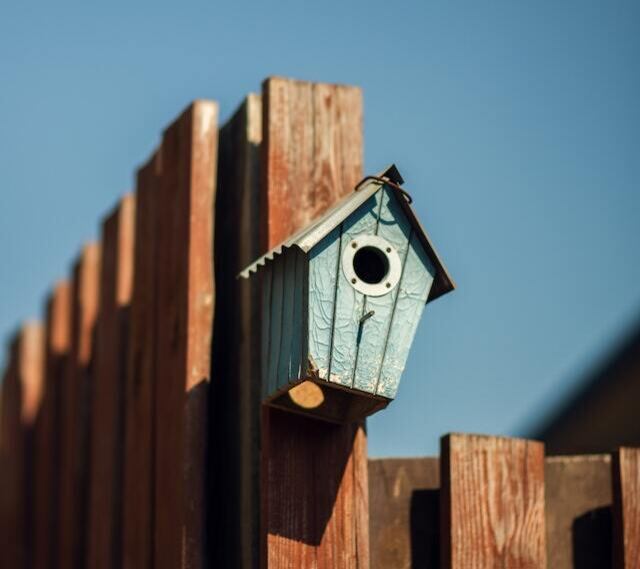
Factors that Affect Birdhouse Usage
Location: The Importance of Placement
When it comes to setting up birdhouses, location is key. Birds are very particular about where they nest and will only use a birdhouse if it meets their specific requirements.
For example, some species of birds prefer to nest in areas with plenty of vegetation, while others prefer more open spaces. It’s important to consider the environment when selecting a spot for your birdhouse.
Birds need a safe and secure place to call home, free from disturbance or potential threats such as predators or harsh weather conditions.
Avoid placing the birdhouse in areas that are too exposed or close to busy roads or other sources of noise pollution that might scare off potential inhabitants.
Size and Design: Choosing the Right Birdhouse
Birdhouses come in a variety of sizes and designs, each suited to different types of birds. Choosing the right size and design can greatly increase the chances of attracting birds to your garden. When choosing a birdhouse, consider the species you want to attract.
Different birds have different requirements when it comes to nesting sites. For example, bluebirds prefer smaller houses with round openings, while wrens like larger houses with more intricate designs.
It’s also important to choose a well-made birdhouse that is sturdy enough to withstand harsh weather conditions and predator attacks.
A good quality birdhouse will be made from durable materials such as cedar or pine wood.
Availability of Natural Nesting Sites: Competition for Resources
One factor that can greatly affect birdhouse usage is the availability of natural nesting sites in the surrounding area. Birds will often choose natural nesting sites over man-made ones if they’re available. If there are plenty of trees around your property with suitable nesting holes for birds, they may not be interested in using your birdhouses.
Conversely, if natural nesting sites are scarce in the area, your birdhouses may become a popular choice for local birds. It’s important to monitor your birdhouses regularly to ensure they’re being used.
If you notice that your birdhouse is not attracting any birds, it might be worth considering its location or design. With some tweaks and adjustments, you can create a safe and comfortable home for our feathered friends.
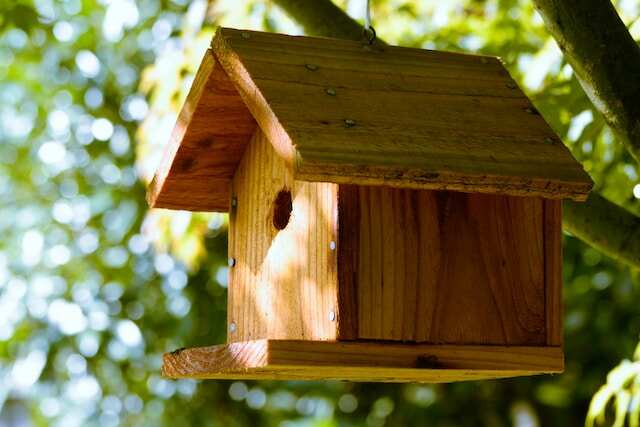
Benefits of Using Birdhouses for Birds and Humans
Increased bird populations in urban areas
Birdhouses are not only beneficial for the birds, but also for humans. One of the primary benefits is that they help increase bird populations in urban areas.
As cities expand, natural habitats for birds become scarce. Birdhouses provide a safe and suitable nesting site, which can encourage more birds to inhabit urban areas.
Increasing bird populations can also lead to a healthier ecosystem. Birds help pollinate plants, control insect populations, and spread seeds throughout an area.
This means that creating an environment that is welcoming to birds can have a positive impact on the entire ecosystem.
In addition to benefiting the environment, increasing bird populations in urban areas can also provide entertainment for humans who enjoy watching and listening to birds as part of their daily lives.
Pest control in gardens and farms
Another benefit of using birdhouses is pest control in gardens and farms. Many species of birds are natural predators of insects like caterpillars, beetles, aphids, and other pests that cause damage to crops.
Birds that use nesting boxes often feed their young with insects that they catch nearby.
By providing them with suitable nesting sites like birdhouses near your garden or farm, you’re encouraging them to stay in the area longer while they raise their young.
For example, bluebirds are known for eating large amounts of insects during breeding season, which makes them helpful allies in controlling insect infestations around your garden or farm.
By helping natural predators thrive near crops or gardens without using chemicals or other harmful methods such as traps or poisons not only helps keep your garden healthy, but it also keeps harmful substances out of the environment, leading to safer living ecosystems.
Educational opportunities
Birdhouses provide educational opportunities for both adults and children by creating awareness about the importance of avian life.
Children can learn about the different types of birds and their nesting habits, while adults can enjoy observing the behavior of birds as they use the birdhouses.
Additionally, observing birds in their natural habitats is a popular pastime for many people. By providing suitable nesting sites like birdhouses, you’re creating an opportunity to observe birds up close.
This helps people truly appreciate the beauty and diversity of nature around them while also learning various aspects of animal behavior.
Overall, using birdhouses provides an opportunity for humans to help our feathered friends by providing them with safe and suitable nesting sites that encourage increased populations, thereby leading to sustainable environmental benefits.
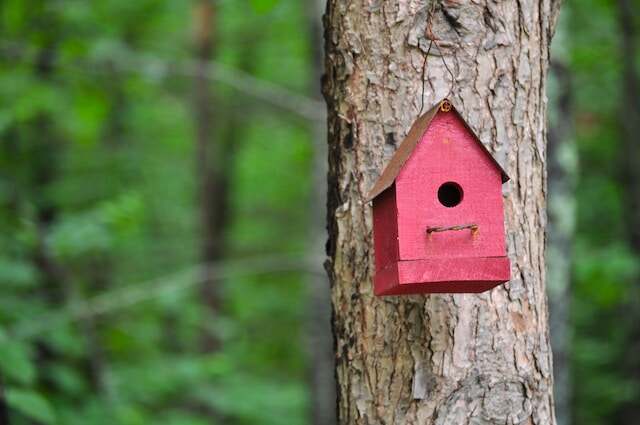
Common Misconceptions about Birdhouses
Birds can only use natural nesting sites.
It is a common misconception that birds will only use natural nesting sites, such as tree cavities or shrubbery. However, the truth is that many bird species have adapted to using man-made structures such as birdhouses or nest boxes.
In fact, providing suitable nesting sites for birds has become increasingly important due to habitat destruction and urbanization. While it is true that some birds may prefer natural cavities, others have adapted well to using birdhouses.
For example, bluebirds are known to prefer nest boxes over natural cavities because they offer better protection from predators.
Chickadees and wrens also readily use birdhouses, especially if they are placed in suitable locations and designed correctly.
Providing birdhouses can be a crucial way of ensuring the survival of certain bird species in areas where natural nesting sites are scarce.
It also provides an opportunity for people to connect with nature by observing the behaviors of these fascinating creatures up close.
All birds will use any type of birdhouse.
It is another common misconception that all birds will use any type of birdhouse indiscriminately. However, different birds have different preferences when it comes to choosing a nesting site.
Factors such as the size and design of the birdhouse, as well as its location, play a crucial role in determining whether or not a particular species will take up residence.
For instance, woodpeckers require larger and deeper nest boxes than other small songbirds because they need more space for their young ones.
Similarly, cavity-nesting ducks prefer deeper boxes with larger openings compared to typical songbird-friendly boxes.
Additionally, location plays an important role in determining whether or not a particular species will take up residence in your backyard habitat.
For example, placing a bluebird box too close to bushes or trees may attract house wrens instead of bluebirds.
Understanding the needs and preferences of different bird species is important in determining the most suitable type of birdhouse to use.
Taking the time to research these factors can go a long way towards attracting the right species and providing them with a safe and comfortable nesting site.
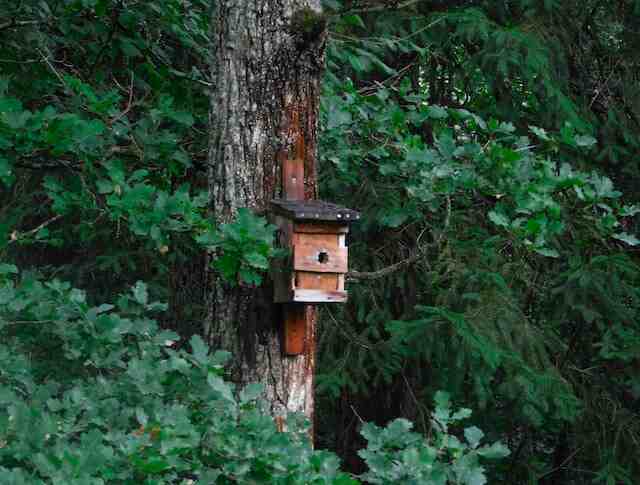
Conclusion
A Recap on the Importance and Benefits of Using Birdhouses
Birdhouses are an essential component in providing birds with safe and suitable nesting sites. In urban areas, natural nesting sites may be scarce or unavailable, leading to a decline in bird populations.
By installing birdhouses in our gardens, backyards, and parks, we can help maintain a healthy population of birds and support their breeding and feeding patterns.
Birdhouses also provide an opportunity for humans to observe the natural world up close. The benefits of birdhouses extend beyond just providing shelter for birds.
They also aid pest control in gardens and farms by attracting insect-eating birds like bluebirds and swallows.
Additionally, they can serve as a tool for education about the importance of conservation efforts aimed at preserving bird habitats.
Answer to the Question: Yes, Birds Do Actually Use Birdhouses
Many species of birds have been observed using birdhouses for shelter, nesting, or both. Bluebirds are known to use them as breeding sites while chickadees prefer them during winter months for protection from harsh conditions.
Wrens are also frequent users of birdhouses, as they build their nests inside them during breeding season. Even woodpeckers have been known to use specially designed birdhouses.
Studies have shown that factors such as location, size and design of the birdhouse play a significant role in determining whether or not birds will use them consistently.
Availability of natural nesting sites is also important to consider when determining where to place a birdhouse.
Final Thoughts on How We Can Help Our Feathered Friends by Providing Them with Safe and Suitable Nesting Sites
Installing a variety of different types of birdhouses can attract different species of birds throughout the year. It is important to research which species are common in your area before selecting a specific type or design.
In addition to providing birdhouses, we can also help protect natural nesting sites by avoiding the use of pesticides and planting native trees and shrubs that provide suitable habitats.
By taking these simple steps, we can ensure our feathered friends have safe and suitable nesting sites, ultimately leading to healthier and more vibrant bird populations.
Birds do actually use birdhouses, and they offer a range of important benefits for both birds and humans.
By installing birdhouses in suitable locations, we can support breeding patterns, pest control efforts, education about conservation efforts aimed at preserving bird habitats, and offer an opportunity to observe nature up close.
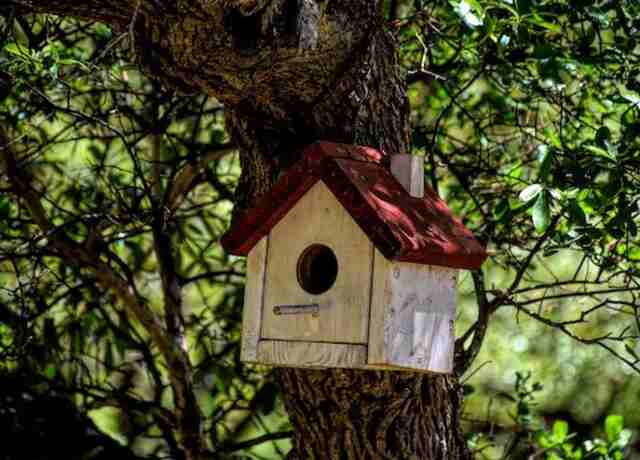
FAQs: Do Birds Actually Use Birdhouses?
Do birds actually use birdhouses?
Yes, many bird species use birdhouses as safe and comfortable nesting sites, especially when natural cavities are scarce. Providing suitable nest boxes can attract a variety of birds, such as bluebirds, chickadees, and wrens, enhancing your backyard bird-watching experience.
What types of birds use birdhouses?
Different bird species have varying preferences for nest box designs and sizes. Common occupants include bluebirds, chickadees, titmice, wrens, woodpeckers, and some owl species. Researching the specific requirements of your target bird species will increase the likelihood of attracting them.
How can I attract birds to use my birdhouse?
To attract birds, place your birdhouse in a suitable location, provide appropriate nesting materials nearby, and ensure a safe and predator-free environment. Offering food, water, and native plants will also make your yard more appealing to birds seeking a place to nest and raise their young.
What should I look for in a birdhouse?
Choose a birdhouse that is well-built, durable, and properly designed for the target bird species. Opt for materials like untreated wood, provide appropriate ventilation and drainage, and include an easily accessible entrance hole of the correct size for the desired birds.
When should I put up birdhouses?
Ideally, birdhouses should be installed in late winter or early spring before birds begin seeking nesting sites. This allows them to become familiar with the birdhouses and claim them as their own. However, birdhouses can be put up at any time of the year, as some species may use them for roosting during colder months.
Where should I place my birdhouse?
Select a suitable location that mimics the bird’s natural habitat. Ensure the birdhouse is securely mounted on a pole, tree, or building, positioned away from direct sunlight, prevailing winds, and potential predators. Different bird species have specific preferences regarding height and surroundings, so research their requirements for optimal placement.
How can I maintain my birdhouse?
Regular maintenance is essential to keep birdhouses clean and safe. Clean out old nests after each nesting season, inspect for damage or wear, and make necessary repairs. Avoid using pesticides or harmful chemicals nearby, and monitor the birdhouse regularly for any signs of pests or predators.
Can I have multiple birdhouses in my yard?
Yes, having multiple birdhouses of different designs and sizes can increase the chances of attracting a variety of bird species. Provide adequate spacing between birdhouses to minimize competition and territorial conflicts. Each species will have its own territory requirements, so research their needs before installation.
What if birds don’t use my birdhouse?
It’s common for birdhouses to go unused in the first year or two. Be patient and make adjustments if necessary, such as changing the location, height, or entrance hole size. Offering desirable features like suitable nesting materials and a well-maintained habitat can encourage birds to consider your birdhouse in the future.
Can I watch birds without disturbing them in the birdhouse?
Yes, it is possible to observe nesting birds without causing disturbance. Use binoculars or set up a discreet bird-watching station at a distance. Avoid approaching or checking the birdhouse too frequently, as this may cause stress and lead to abandonment. Respect the birds’ privacy and enjoy their activities from a respectful distance.

